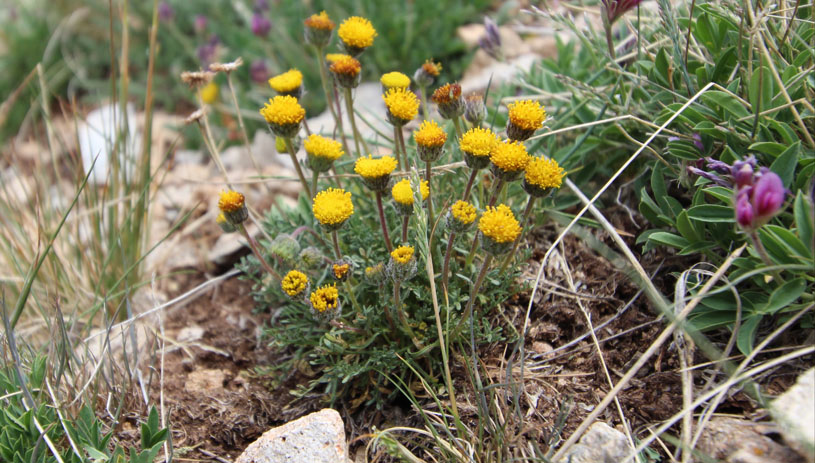About a week into August, we were asked to help the alpine botany crew with a species composition plot. Since I had started this job, I had been dreaming about working with the alpine botany crew. I knew very little about their job, but I knew they hiked into the alpine every day and that sounded amazing to me!
That first day with them we hiked above 11,000 ft which was the highest elevation I had ever been to by at least 2,000 ft. To put that height into perspective, the highest peak in Oregon in 11,200 and we weren’t even at a peak! The site was at a saddle between two peaks and had me in awe the entire next two days. I couldn’t stop thinking that the two alpine botanists had to be the luckiest people alive to have places like this be their office every day!

The species composition plot consisted of three vegetation transects that were about 36 meters long and we would log vegetation every 0.5 meters. At the end of each transect we would set up three 1 square meter plots and find what percentage each plant present took up of this square.

On our way down on the last day we saw a group of mountain goats. I learned that one of the main reasons the alpine vegetation needed to be monitored so closely in the La Sal’s was that the goats were introduced here as a game species, and they were monitoring what effects they had on rare alpine plants.

After working with the alpine crew for a couple of days we went back to business as usual: building fences, collecting Heterotheca villosa and scouting for Heliomeris multiflora. We don’t expect to begin collecting Heliomeris multiflora until mid September and are nearing the end of our Heterotheca villosa collection which meant we had a little extra time for other projects.



The last week of August, one of the alpine botanists had the week off and they requested me to fill in. I was over the moon excited! I was going to be helping with the rare plant surveys that they complete every day, which are smaller and quicker than the species composition plot I had helped with before. The rare plant surveys are either a single 10 meter or 15 meter transect, where we place four 1 square meter plots at equal intervals along the transect and mark where within these plots a rare plant is seen. We also do a pellet count to gauge goat, deer and elk presence within the study area.

The La Sals are on of only three areas on the Colorado Plateau where you can find true alpine tundra communities, making the plant life super fascinating. One interesting plant they study is called Silene acaulis and is a mossy plant that gets covered in tiny vibrant pink flowers. Studies have found this plant to live to over 300 years old! Another interesting species we saw was Erigeron mancus which is a little yellow button flower that we spent most of the week studying and is endemic to the area.


This was easily one of the best work weeks I have ever had! We hiked over 30 miles and gained over 8,000 ft in elevation total. The highest peak we summited was 12,600 ft with some of the most breathtaking views I have ever seen.



August is when I truly fell in love with these mountains. I can’t wait to summit more in September!
Cheers!
MS
